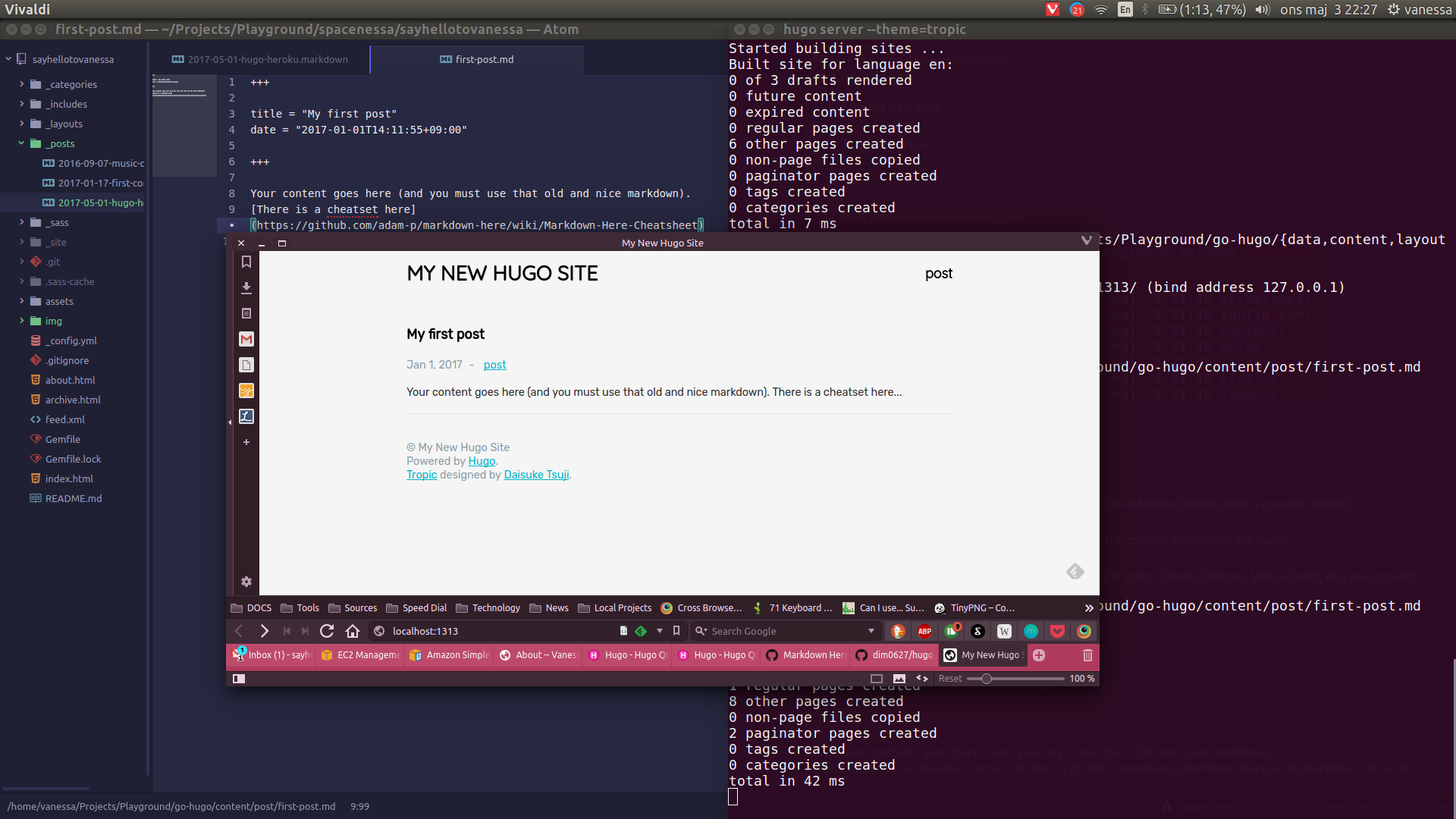Today I played a little bit with a simple CMS written in Golang. Then I decided to share how to setup your own golang blog locally. So here I have the steps I took to run my small blog in Hugo. The next article will be about how to pusblish Hugo on Heroku. Soon!
Getting Hugo
I installed Hugo directly from the link source. I am using a Ubuntu 16.04 machine. You can choose the best Hugo release for you operational system here.
$ wget https://github.com/spf13/hugo/releases/download/v0.20.6/hugo_0.20.6_Linux-64bit.deb
Check your version.
$ hugo version
I recommend anything higher than version 0.18.

Creating a Hugo blog locally
Let’s the fun begin! So you must create a new folder with your new blog name (in this case, Go Hugo).
$ mkdir go-hugo
$ cd go-hugo
Create the new blog:
$ hugo new site .
$ la
It must have 6 directories and 1 file.

Then you need to create your first content.
$ hugo new content/post/first-post.md
(OR you can simply download these files from Github and move them to your /content folder).
By what I read on the Hugo themes, all .md files in the content folder root are pages.
If you open this new first-post.md file in your code editor (Atom, Sublime, Vim or Gedit, etc) you can edit its metadata by adding this to the top of the file:
+++
title = "My first post"
date = "2017-01-01T14:11:55+09:00"
+++
Your content goes here (and you must use that old and nice markdown).
[Cheatset here] (https://github.com/adam-p/markdown-here/wiki/Markdown-Here-Cheatsheet)
Hugo customization and serve
Add a theme to your Hugo blog. I am taking the Beautiful Hugo theme as our example.
$ git clone https://github.com/halogenica/beautifulhugo.git themes/beauty
After this last step in your configuration, your blog is ready to be run.
$ hugo server --theme=beauty
Check your new blog on your browser by typing http://localhost:1313.
 (This image shows another Hugo theme I was testing before, so don`t be disapointed if you get a different Hugo appearance).
(This image shows another Hugo theme I was testing before, so don`t be disapointed if you get a different Hugo appearance).
Now you can start messing around your installation. You can build and deploy it in many free hosting services. I did it on Heroku and will write about it.